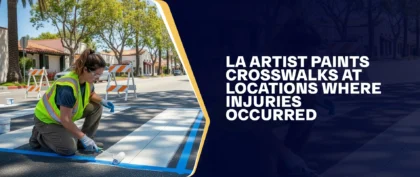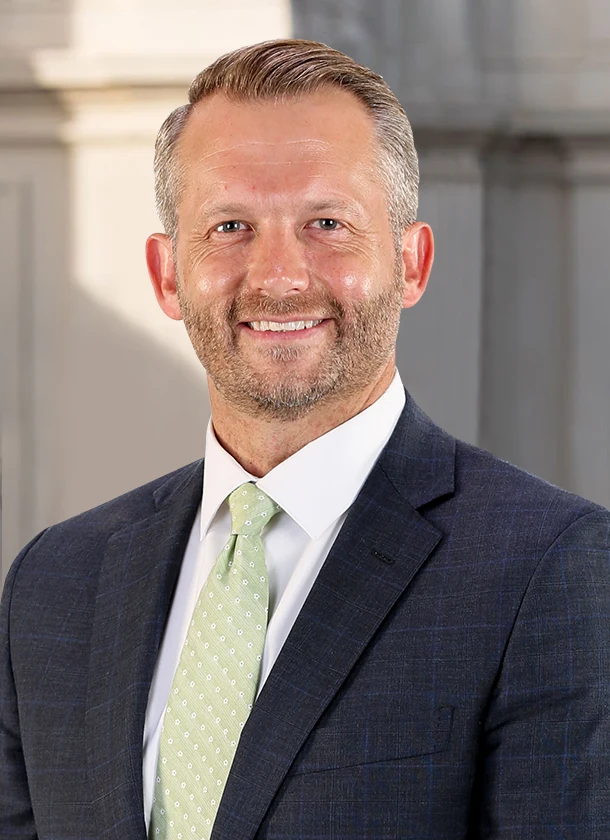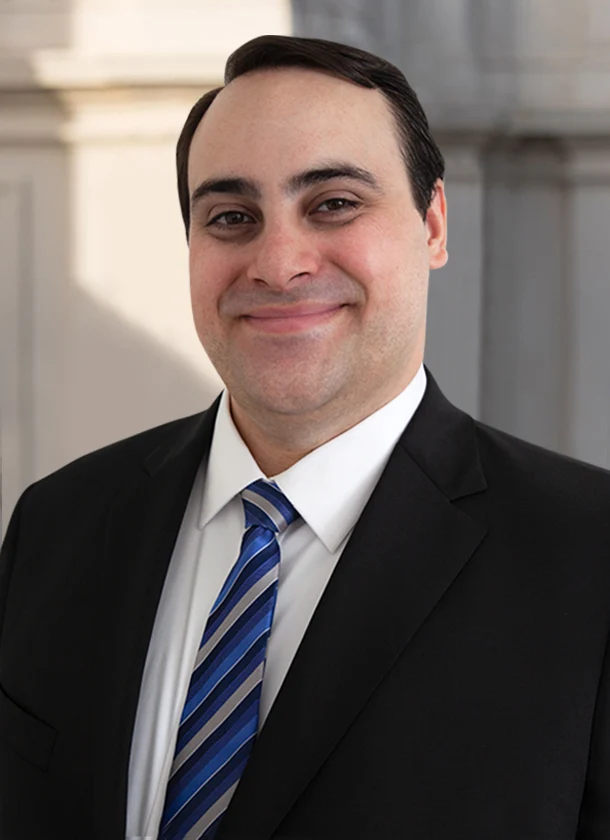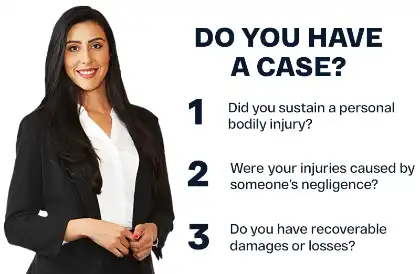Table of Contents
Los Angeles, a sprawling metropolis synonymous with freeways, movie stars, and palm-tree-lined boulevards, can be intimidating for cyclists. If you know where to look, it has everything a city needs to become one of the best biking regions in the country — a year-round Mediterranean climate, mostly flat topography, and an endless array of things to do and see. However, it has been repeatedly named one of the worst places to ride a bike, mostly due to its car-centric infrastructure.
Cyclists in LA regularly get involved in accidents, causing severe injuries and deaths. BikeLA, a Los Angeles County bicycle advocacy group, analyzed the factors behind these cases. The region had yet again recorded a high number of bicyclist fatalities in 2022, prompting the organization to push for improvements.
The number of bike accidents in Los Angeles County is not just statistical data. It’s a pressing concern for residents and city planners alike. As more locals turn to bicycles for commutes, fitness, or leisure, understanding the dynamics of bike accidents in this urban area becomes crucial.
Understanding The Risks Of Bicycle Accidents In Los Angeles
Bicycles are becoming an increasingly popular option for commuting and exercising in Los Angeles. They’re also proving to be a practical choice for delivery persons who work for Uber Eats and similar delivery services, offering a cost-effective and environmentally friendly alternative to cars and motorcycles. However, the county is severely underprepared for cyclists’ needs. The lack of proper infrastructure and prevailing car culture leads to a high number of bicycle accidents, which include those involving motor vehicles and food delivery services.
Cycling in most places in Los Angeles is inherently dangerous due to various environmental and infrastructure factors. The city is notorious for heavy traffic and reckless drivers, which disadvantages cyclists. Sometimes, riders must travel through fragmented bike lanes that “lead to nowhere.”
This situation is not surprising, given the region’s reliance on cars as the primary mode of transportation. While Los Angeles is slowly implementing improvements, the infrastructure for cyclists and pedestrians has historically been an afterthought. Our bike accident lawyers in Los Angeles understand the risks of these issues, and they, along with BikeLA and other organizations, advocate for safer streets.
How Do Bicycle Accidents Happen In LA?
Cycling should be enjoyable and safe for everyone. Unfortunately, accidents happen too often, and the number of bicycle accidents continues to occur frequently year after year.
The following are some of the ways bicycle accidents occur in Los Angeles:
- Single-Bicycle Crashes — Cyclists can get involved in crashes without external direct impact due to factors like lack of experience and riding while impaired. However, these accidents can also result from external factors, such as a speeding vehicle cutting too close, startling, and causing the cyclist to crash.
- Motor Vehicle Collisions — These are among the most common and dangerous types of bicycle accidents. A bike’s lack of protection makes riders highly susceptible to injuries and fatalities, as they bear the brunt of the impact in a motor vehicle accident.
- Collision With a Pedestrian or Object — Loss of balance and distractions while riding can cause cyclists to crash into objects like trees or car doors opening in front of them. Los Angeles is infamous for its inadequate sidewalk infrastructure, which increases the risk of bicycle vs. pedestrian accidents.
- Collision With Other Cyclists — Cyclists are also at risk of colliding with fellow riders. This scenario typically occurs in crowded areas, during peak hours, or on group rides. Even at lower speeds, these collisions can cause injuries.
BikeLA examined these accidents, the factors involved, and potential solutions for reducing fatalities in Los Angeles.
How Many Deaths Occurred Due To Bicycle Accidents In Los Angeles?
Provisional data from UC Berkeley’s Statewide Integrated Traffic Records System (SWITRS) showed that Los Angeles County had 32 bicyclist fatalities in 2023. This figure represented the highest number in the state, but a significant 11% decrease from the previous year. BikeLA’s latest Bicycle Safety Report analyzed 26 of the 36 fatalities recorded in the county in 2022.
While the decrease in fatalities from 2022 to 2023 is promising, it still emphasizes the need for continued efforts to protect cyclists and promote safer riding conditions in Los Angeles.
Top Contributing Factors To Fatal Bicycle Accidents In LA
BikeLA explored the common characteristics and locations of deadly bicycle collisions, identifying four major contributing causes:
High-Speed Limit
Around 38% of bike accidents occurred on roads with a speed limit of over 35 mph. Some examples include Centinela and Mitchell Avenues in Los Angeles and Val Vista Street and Paige Drive in Pomona.
While 35 mph doesn’t seem dangerous for motorists, it’s significantly above the average cycling speed of 25 to 28 mph. At these speeds, collisions between motor vehicles and cyclists or pedestrians can result in serious consequences. Due to their lack of protection, these groups are highly vulnerable. Being hit by a car can lead to serious and fatal injuries, including internal organ damage and head injuries.
The risk is heightened if a speeding driver is involved. Higher speeds reduce reaction time and result in greater impact, making speeding-related accidents more dangerous for cyclists.
Multi-Lane Roads
Eli Akira Kaufman, executive director of BikeLA, believes the infrastructure must support cyclists’ freedom to navigate Los Angeles without fear of death. Yet, the county’s current auto-centric infrastructure significantly increases the risk of accidents, even for careful and alert riders. He emphasized that on-the-street reality “is unacceptable for all modalities.”
The group found that 77% of cyclist fatalities in LA occurred on multi-lane roads, often with three or more lanes in each direction. This design suggests that the road is meant primarily for vehicles rather than for all users, influencing motorists’ behavior toward cyclists and pedestrians. The layout of these corridors encourages higher speeds and reduced vigilance toward bicyclists, which can lead to collisions.
No Bike Lanes
The absence of bike lanes is a significant factor in bicycle-related fatalities. Unfortunately, cyclists in Los Angeles must often contend with unsafe driving behaviors. Many traffic accidents in the region occur due to reckless driving and speeding. Without designated lanes, cyclists are at the mercy of other motorists on the road.
Unsurprisingly, 85% of the bicycle crashes examined in the study occurred on roads without bike lanes. This finding suggests that the lack of proper infrastructure for bicyclists is a major contributing factor to dangerous road conditions that lead to accidents.
According to BikeLA, several collisions happened where bike facilities ended, such as by the brand-new Sixth Street Viaduct and the Martin Luther King Jr. Boulevard bike lane’s southern terminus on Figueroa Street.
However, proper infrastructure implementation is crucial even on roads with bike lanes. BikeLA advocates for protected lanes and bike boulevards instead of mere painted paths. These measures create clear boundaries and prevent vehicles from entering spaces designated for bicycles, significantly enhancing cyclist safety.
Nighttime Riding
Riding a bicycle at night shares the same risks as nighttime driving. The report found that it contributed to 54% of fatal bicycle accidents. BikeLA identified poor lighting on Los Angeles roads as one of several factors contributing to fatalities, which reduced visibility and created hazardous conditions for all motorists and other road users.
Aside from poor visibility, impaired drivers add to the dangers of cycling at night. People leave bars and clubs at this time, usually intoxicated. Unfortunately, many of them choose to drive, creating risks of accidents because of their decreased motor coordination skills, reduced reaction time to sudden traffic changes, and increased risk-taking behaviors. Additionally, drivers are more likely to be fatigued at night, which impairs driving abilities almost as severely as alcohol and drugs.
Most accidents involve a combination of these factors, and in some cases, all factors were present in the crash. These issues must be addressed through more comprehensive education programs and stricter implementation of existing regulations in Los Angeles County.
Other Causes Of Bike Accidents
Although the number of fatalities decreased in 2023, the issues BikeLA highlighted above persist in Los Angeles County. Various other factors contribute to bike accidents, leading to injuries and fatalities. Some notable examples include:
- Riding against traffic.
- Aggressive driving behavior, such as speeding or tailgating.
- Mechanical defects such as faulty brakes or tires.
- Construction zone accidents due to inadequate signage or road obstructions.
Addressing these additional factors requires a comprehensive approach. This includes better education for cyclists and drivers, and the cooperation of the local government to implement and enforce safety measures.
Deaths of cyclists on Los Angeles County roads for the years 2017-2022 – via BikeLA report.
Where Bicyclist Fatalities Often Occur In Los Angeles County
Most of the 26 cases analyzed in the report occurred in the city of Los Angeles. BikeLA reported that Long Beach and Lancaster had three and two cases, respectively, while other cities had one fatality each.
However, more detailed data from the SWITRS revealed that LA City had 20 cyclist deaths in 2022. Lancaster, South Gate, and Long Beach recorded two cases each. Ten other areas, including unincorporated communities, had one fatality each.
In 2023, the city of LA saw a decrease in bicyclist deaths, with 15 reported cases. However, there was a slight increase in other areas. Some cities, like Downey and Santa Clarita, went from zero in 2022 to two fatalities in the following year.
While cyclist deaths are usually concentrated in the City of Angels, this higher number does not necessarily equate to higher risks. The disproportionate number of fatalities is partly due to the city’s enormous population. When adjusted for the number of deaths per 100,000 residents, the risk level in the city may be comparable to or lower than that in smaller cities.
BikeLA also noted that many cases occurred near each other and in major corridors included in the regional High Injury Network (HIN). Around 65% of fatal and serious traffic injuries occurred within this street network subset, highlighting the risk for all road users.
The High Number Of Bicycle Fatalities In Low-Income Communities
According to Kevin Shin, deputy director of BikeLA, the communities that need the most help are located in lower-income, POC-dense areas. The biking advocacy group reported that 61% of cyclist fatalities in 2022 occurred in low-income communities and areas where 65% of the population were people of color.
Historically, disinvestment and systemic racism have resulted in a lack of resources for these communities, leading to the adverse outcomes we see today. According to Kaufman, the goal is to “reshape the policies that distribute resources so that these communities can enjoy their streets safely.” Increasing bicycle infrastructure must include and lift the voices of historically underrepresented communities through participatory budgeting, targeted infrastructure funding, and community education.
Notable Areas Of Concern In Los Angeles
LA’s busy streets are filled with cars and bicycles weaving through heavy traffic. Unfortunately, traffic congestion increases the risk of accidents, especially in the most dangerous intersections in Los Angeles County.
Here are some of the most notorious roads in Los Angeles County for cyclist fatalities, according to BikeLA’s report:
East Anaheim Street, Long Beach
East Anaheim Street, a major road in Downtown Long Beach, notably lacks bike lanes, crosswalks, and other traffic calming measures. Consequently, two fatalities occurred within a one-mile stretch between Walnut and Obispo avenues. As of 2023, five cyclist deaths have been recorded in Long Beach.
Martin Luther King Jr. Blvd. And Figueroa Street, Los Angeles
The intersection of these two major arterial roads in Los Angeles is a hotspot for bicycle accidents. Cyclists pass through this area to access several key parts of the city, contending with motorists heading for the freeway. Increased traffic, the high-speed limit of 35 mph, and a lack of proper infrastructure make this intersection particularly challenging for cyclists, leading to a higher risk of fatal bike accidents.
Figueroa Street In Downtown LA
Figueroa Street is a heavily congested corridor that many motorists and cyclists use to access downtown LA. Despite some bike lane improvements, including a buffer-separated lane, the risk of accidents remains high due to the auto-centric design and high-speed traffic. Since 2021, three fatalities have been recorded on the stretch between 3rd and 7th Streets.
Avenue H And Avenue J In Lancaster
Both suburban streets feature buffer-separated bike lanes, yet fatal bike accidents still occur. The main issues are the high-speed limits — 60 mph on Avenue H and 40 mph on Avenue J — along with heavy turning traffic and gaps in the bike lane infrastructure.
BikeLA Suggestions To Improve Bike Safety
A systemic shift is needed to make the region safer for cyclists and pedestrians. Kaufman advocates for increased bicycle use among Angelenos as an alternative to cars, especially given LA’s ideal weather for cycling.
In light of these alarming findings, BikeLA has proposed several infrastructure improvements:
- Impose lower speed limits based on each road’s bicycle usage rather than standard formulas.
- Modernize bicycle lane design standards and address regional bike lane network gaps.
- Advocate for high-quality and reliable LED bulbs at all intersections.
- Provide cyclists with headlights.
- Implement road diets and convert underutilized vehicle lanes into protected bike lanes.
The organization also recommends some policy changes to support these improvements, including:
- Participatory Budgeting — Allow neighborhood residents to vote on the fund allocations. This way, cyclists can help shape better infrastructure rather than passively adjust to existing conditions.
- Short-Term Roadway Enhancements — Use cost-effective solutions, such as restriping and plastic delineators, before undertaking more comprehensive projects.
- Targeting Infrastructure Funding Programs — Secure grant funding for infrastructure projects in low-income communities to address disparities.
- Education & Rider Empowerment — Provide cyclists with more tools and strategies to navigate Los Angeles County safely. Educate motorists about cyclists’ rights to improve mutual understanding and respect on the road.
These suggestions aim to create safer biking communities for residents of all ages — from kids going to school to older people getting their daily exercise. Nevertheless, any initiative to make Los Angeles a safer place to bike must involve the cooperation of residents.
The Current State Of Biking Infrastructure In Los Angeles County
Some of these suggestions, like road diets, have been implemented successfully. The Los Angeles Department of Transportation (LADOT) previously converted Rowena Avenue, yielding positive results, including:
- Increase in bicycle numbers on the road during peak hours.
- Decrease in all types of crashes.
- A drop in annual traffic crashes.
- A drop in annual pedestrian and bicycle crashes.
- Reduced unsafe speed crashes.
A recent report by the UCLA Institute of Transportation Studies supports this strategy. It showed a 44% reduction in collisions in road-dieted corridors compared to similar corridors. Meanwhile, it created a “negligible” 11-second-per-mile delay for drivers.
What’s stopping the whole county from implementing this strategy on other major arterial roads?
One major obstacle is the divide between cyclists and motorists. Improving bike facilities affects the existing car infrastructure. In an auto-centric county like LA, many drivers oppose reducing their lanes. To them, even a “negligible” delay is a significant inconvenience.
As such, widespread education and awareness programs are needed to fully embrace road diets and other cycling infrastructure improvements. These programs are a key component of the Los Angeles Bicycle Master Plan (BMP), which is currently being updated. The Public Works division will incorporate new policies, propose new bikeways, update existing facilities, and improve cyclists’ overall mobility and safety. These goals align with BikeLA’s vision, promising a safer and more inclusive future for all road users.
The BMP is currently in the Public Participation stage, allowing communities to voice their opinions and concerns. The final update is set to be completed by Winter 2025, after which the planned improvements will begin.
Common Types Of Fatal Bicycle Accidents In Los Angeles
BikeLA’s report did not detail the types of accidents that occurred. Additional data from UC Berkeley’s SWITRS Query Tool revealed the most common bicycle accidents that lead to deaths in LA:
Broadside Collisions
From 2022 to 2023, broadside accidents contributed the highest number of fatalities, accounting for 34.85%, or 23 deaths. These collisions typically occur at intersections when a crossing bicycle is hit from the side by a vehicle, often due to one party running a red light.
Unfortunately, these kinds of accidents are dangerous for cyclists because of the lack of protection. They are highly likely to be thrown off violently at a far distance, increasing their chances of sustaining broken bones, concussions, scrapes, and back injuries. Victims may have to hire T-bone accident lawyers to claim compensation for their medical bills, lost wages, and emotional distress.
Rear-End Accidents
Meanwhile, rear-end accidents accounted for 15 fatalities, or 22.73%, of bicycle deaths from 2022 to 2023. These collisions usually occur when a driver follows too closely or fails to notice a cyclist in time. The force from the vehicle propels the cyclist forward, often causing them to fall off their bikes and sustain head injuries, facial bone fractures, and more.
Sideswipes
Bikes are pretty challenging to see because of their small size. Moreover, they often travel on the right side of a car, frequently in the driver’s blind spot. This positioning makes them susceptible to being hit on the side by a moving car traveling in the same direction. Sideswipe accidents often occur due to the driver’s negligence, such as failing to check their blind spots before changing lanes, entering the bike lane while distracted, or driving under the influence.
In two-vehicle car accidents, sideswipes can result in minor consequences, like scratches on the vehicle, with no major or lasting injuries to the passengers. However, if a bicycle is involved, the rider can quickly lose balance and fall on the pavement, leading to minor or catastrophic injuries.
Secondary collisions resulting from the initial incident can even lead to fatalities. For example, a cyclist who falls on the road could be run over by a distracted driver. According to a traffic safety analysis, distracted driving behaviors, such as texting while driving, significantly contribute to traffic fatalities in Los Angeles. Because of these dangers, sideswipe incidents account for eight, or 12.12%, of bicycle deaths.
Head-On Accidents
Head-on collisions occur when a motor vehicle or another bicycle hits a cyclist from the front. These commonly happen when a cyclist goes the wrong way and ignores the road. They can also occur if a vehicle in the opposite lane drifts into the cyclist’s lane due to the driver falling asleep at the wheel or being distracted.
These collisions are particularly severe due to both parties’ combined speed. From 2022 to 2023, head-on accidents accounted for two fatalities, or 3.03%.
Understanding Bicycle Laws In Los Angeles County
Cyclists must follow the same traffic laws as motor vehicle drivers. Los Angeles also follows the bicycle laws enforced throughout California, including:
Helmet Use
Cyclists are generally not required to wear helmets. However, according to California Vehicle Code 21212, those under 18 must wear a helmet that meets the United States Consumer Product Safety Commission (CPSC) or American Society for Testing and Materials (ASTM) standards.
Even if you are allowed to ride without a helmet, it is highly recommended that you wear one for safety. Helmets can significantly reduce the risk of brain injuries and other serious head traumas in the event of an accident.
Bike Lanes
Cyclists must use the bike lane and travel in the same direction as traffic (VEH 21208). If a bike lane is unavailable, riders must travel as close to the curb on the right as possible (VEH 21650). These laws help protect them from passing motor vehicles, which usually travel faster.
Taking The Lane
There are some instances when you can “take the lane” or leave the bike lane to ride in the main traffic lanes (VEH 21202):
- Passing pedestrians or other cyclists.
- Avoiding obstructions in the bike lane.
- Preparing for a left turn.
- Approaching a right turn.
- Using a narrow lane.
- Avoiding road construction.
Riding On The Sidewalk
California leaves it to local governments to enforce restrictions on sidewalk riding. In Los Angeles, cyclists can ride on sidewalks provided they don’t have a “willful and wanton disregard for the safety of persons or property.”
In other words, you must still ride carefully. Riding on the sidewalk requires a higher level of care, mainly because of the presence of pedestrians. You must ride at a cautious speed, carefully avoiding pedestrians, obstacles, and private property.
Intersections
Cyclists can use the crosswalk to cross the street or an intersection. However, they must take care not to harm pedestrians.
When riding on the road, cyclists must always follow the right-of-way laws and yield to pedestrians at marked and unmarked crosswalks (VEH 21950). Additionally, cyclists are required to stop at red lights just like other vehicles.
Bicycle Parking
According to the Los Angeles Department of Consumer and Business Affairs (DCBA), cyclists must park their bikes beside bicycle racks and in designated parking areas. If there is a furniture zone at least six feet away from the property line and three feet or wider, they can park their bikes upright in this area. The furniture zone, typically where trees and street furniture are located, provides a convenient and safe space for parking bicycles without obstructing pedestrian pathways.
Conversely, riders are not allowed to park their bicycles on a bike path (VEH 21211) or private property unless permitted by the owner. According to VEH 21210, they must also not park in a manner that blocks:
- Foot traffic.
- ADA access, driveways, entryways, crosswalks, and construction zones.
- Access to news racks, parking meters, bus shelters, parking pay stations, benches, etc.
E-Bikes
Electric bicycles have three classifications:
- Class 1 — 20 mph e-bikes with a pedal assist feature.
- Class 2 — 20 mph e-bikes with pedal and throttle assist features.
- Class 3 — Top assisted speeds of 28 mph.
Class 1 and 2 e-bikes can generally use bike lanes and other paths where bicycles are allowed. Meanwhile, Class 3 models can only go on protected bike lanes and separated bikeways (VEH 21207.5).
Biking
VEH 21205 prohibits carrying articles or objects that force you to remove at least one hand from the handlebars. Removing one hand can make you lose control of your bike and impair your ability to maneuver quickly to avoid a collision. You should also avoid holding onto a moving vehicle or attaching your bike to “hitch a ride” (VEH 21203).
Restrictions
Bicycles, including e-bikes, are not allowed to go on the following corridors unless specifically permitted:
Requirements For Bicycle Equipment In Los Angeles
California VEH 21201 and VEH 21204 outline the following rules for proper bicycle equipment:
- Brakes — Bicycles must have brakes that can execute a one-braked-wheel skid on dry, level, clean pavement.
- Handlebars — The handlebars must not be higher than the rider’s shoulders.
- Size — The bicycle must be appropriately sized for the rider. The cyclist should still be able to support the bike with one foot on the ground or start and stop safely.
- Seats — The bike must have a permanent, regular seat. Riders weighing less than 40 pounds must use a seat that secures them in place and protects them from moving parts.
The bicycle must also be equipped with lights and reflectors that adhere to the following requirements:
- Visible white light from a distance of 300 feet from the front.
- Red reflector or red solid/flashing light (with a built-in reflector) visible from a distance of 500 feet from the rear.
- White or yellow reflectors on each pedal or the cyclist’s shoes or ankles, visible from a distance of 200 feet.
- Reflectorized tires or a white/yellow reflector on the front wheels and a red reflector on the rear.
Tips For Operating A Bike Safely In Los Angeles County, CA
Each city in the county has varying infrastructure that shapes its biking culture. Nonetheless, these general tips should apply wherever you ride your bike in LA:
- Before riding, inspect the brakes, tires, and lights to make sure they’re working. Maintain your bike in good condition to avoid potentially dangerous breakdowns on the road.
- Use the bike lanes whenever possible. While many might assume it’s safer on the sidewalk, cyclists say otherwise. Sidewalks have many hazards, like driveways, inattentive pedestrians, trees, trash cans, open doors, and other objects.
- Keep your attention focused on the path ahead at all times. Avoid accident-causing distractions like smartphone use. Although no specific law prohibits this practice, using your phone while biking will make you less alert to sudden events.
- Keep your eyes and ears open. Avoid wearing anything that can obstruct your vision and hearing. The law explicitly prohibits wearing earplugs or headsets that cover both ears, although hearing aids are allowed.
- Use hand signals to communicate with drivers and pedestrians, especially when turning or switching lanes. Be predictable, as other motorists might not be used to sharing the road with slow-moving vehicles.
- Don’t carry other passengers. One-seat bikes are for one person only.
- Watch out for pedestrians. Use your bell or horn to get their attention.
- Plan your routes carefully. Use less congested roads and find streets with bike lanes.
- Avoid drinking and cycling. DUI laws apply to cyclists as well. Although there’s no established blood alcohol concentration (BAC) limit for riders, you can get cited for cycling under the influence. Officers have to witness you doing something that demonstrates impaired driving.
Resources For Cyclists In Los Angeles
- Los Angeles County Bicycle Coalition (BikeLA)
- Bicycle and Pedestrian Safety Education Program
- LA County Vision Zero
- Operation Firefly/Operación Luciérnaga
- California Bicycle Coalition (Calbike)
- LA County Bikeways
What To Do After A Bicycle Accident
Cyclists have rights like anyone else on the road. If you are injured in a bicycle accident, here are some examples of how you can protect your rights and keep yourself safe:
- Move to a safe spot away from traffic and assess your condition. If you have serious injuries, call 911 for immediate medical treatment.
- Call the local law enforcement to get the police on the scene. They can mediate, investigate, and create an accident report.
- Exchange information with the other parties involved. If there are any witnesses, ask for their contact details as well.
- Document the accident scene. Take photos and videos of your injuries, property damage, the other vehicles involved, road hazards, and other important details.
- Avoid making statements about who caused the incident until all the facts are clear. Many accidents have several layers of liability, and immediately taking the blame will hurt your chances of pursuing compensation.
- Inform your insurance company about the accident. Provide all relevant information, but don’t overshare.
- Don’t repair your bicycle. You can use it as evidence showing the extent of damage and severity of the collision.
- Contact a personal injury lawyer. They can review your case and provide legal options. If you decide to file a claim, they will help you process it and work to pursue compensation on your behalf.
Frequently Asked Questions
Is It Safe To Ride A Bike In LA?
Cycling is primarily safe in Los Angeles, with thousands of residents using their bikes to go to work, school, or run errands. However, there’s no denying the increased risk of bicycle accidents in the city due to the lack of proper infrastructure.
Los Angeles has the highest number of cyclist fatalities among other counties in California. In 2022, the county recorded 18% of the statewide total of 199. While the raw total dropped to 32 in 2023, it represented nearly 24% of all cases in the Golden State.
While taking proper precautions can help keep you safe from accidents, you still risk getting injured or killed due to another person’s negligence. The county is implementing initiatives to eliminate traffic deaths, but fatalities are still occurring on LA’s streets.
Is LA A Bike-Friendly City?
Los Angeles has the potential to become a great bicycle-friendly city, but it still has a long way to go. In 2018, it was labeled the “Worst Bike City” in the United States due to its auto-centric culture and lack of infrastructure. While improvements have been made, cycling in LA still poses significant challenges.
In 2024, the city scored a networking rating of 25 in People For Bikes, below the average of 28. The scoring system is based on the ease and comfort of cycling in the community, with 100 as the best score.
One of the main reasons cyclists are unhappy with LA is the disconnected bike infrastructure network. The city has hundreds of miles of bike lanes, consisting of fragmented and short stretches. While these lanes can accommodate short rides, they fall short for those who want to use their bicycles as their primary means of transportation.
For longer rides, cyclists must contend with high-speed traffic, reckless motorists, and inadequate bike lanes. This environment makes it difficult for cyclists to navigate the city safely and comfortably, highlighting the need for a more cohesive and comprehensive bike infrastructure network in Los Angeles.
What Is Three Feet For Safety In California?
The Three Feet for Safety Act aims to make cycling in California safer by requiring motorists to maintain at least three feet of distance when passing or overtaking a cyclist. According to California Vehicle Code Section 21760, if maintaining this distance is impossible due to road or traffic conditions, motorists must slow down, then pass or overtake while keeping a safe distance and ensuring the cyclist’s safety.
Motorists must consider several factors, including their vehicle’s size, speed, rain and other weather conditions, traffic conditions, visibility, road surface type, and highway width. Violating this law incurs a $35 fine, which increases to $220 if it results in a collision that injures the cyclist.
How Many Cyclists Are Killed Each Year In California?
According to SWITRS data from 2014 to 2023, around 160 cyclists are killed in traffic accidents each year in California. This figure represents around 4% of the average traffic fatalities for the last ten years. The number has risen and fallen throughout the years, peaking at 199 cases in 2022. The year 2023 saw a sharp decline, settling at 134 fatalities.
How Are Most Cyclists Killed?
Many bicyclists are killed due to collisions with SUVs, pickups, vans, and other light trucks. According to the National Highway Traffic Safety Administration (NHTSA), these incidents accounted for 46% of bicyclist fatalities in 2021.
The reason was explored in a study led by Sam Monfort, a statistician at the Insurance Institute for Highway Safety (IIHS). It claimed that SUVs tend to knock cyclists down to the ground rather than vault them onto the hood. The collision results in riders sustaining a higher rate of ground-impact injuries. Some examples are traumatic brain injuries, organ damage, internal bleeding, and spinal cord injuries that can cause partial or complete paralysis. These injuries are often more severe and fatal compared to those sustained in collisions with cars.
Where Do Most Fatal Bicycle Accidents Occur?
NHTSA revealed that around 62% of cyclist fatalities in 2021 occurred in non-intersection areas. Meanwhile, around 85% occurred in urban settings instead of rural locations. The high traffic density, complex road networks, and diverse road users in urban areas may have contributed to the high number of deadly bike accidents.
However, the data doesn’t fully capture the risk levels, as cities generally have larger populations. While the number of fatalities is higher in urban areas, the rate of accidents per capita might differ in rural areas.
Can I File A Wrongful Death Claim For My Family Killed In A Bike Accident?
If a loved one is killed in a bicycle accident, you may be eligible to pursue damages in a wrongful death claim, depending on your relationship with the victim. In California, the following parties have the right to file a claim:
- The surviving spouse or registered domestic partner.
- Biological or adopted children and stepchildren.
- Minors who were financially dependent on the deceased.
- Other heirs, if there are no surviving parties above.
It’s advisable to see a personal injury lawyer who is experienced in handling wrongful death claims to know your rights and learn more about the process.
Who Is At Fault In Most Bicycle Accidents?
The liable party in bicycle accidents depends on who was negligent. It could be an Uber driver, a pedestrian, a motorist, or another cyclist.
However, bicyclists often get blamed due to the lack of education about cyclists’ rights. For example, a driver might pass a bicycle in the bike lane and turn right recklessly, assuming they have the right-of-way. However, if the cyclist is going straight, they have the right-of-way, and the driver must yield.
Unfortunately, motorists might incorrectly assume that the cyclist was at fault for failing to yield. If the police get involved, they might even reach the same conclusion, often stemming from biases against cyclists.
Remember that liability is a complex subject requiring thorough investigation by those knowledgeable about the laws. If you are injured in an accident, you need a personal injury lawyer who advocates for bicyclist rights. They have a better grasp of the updated laws, especially regarding cyclists. They can help advocate for your rights against the other parties.
Do Bikes Cause More Accidents Than Cars?
Statistically, cars still cause more accidents on the roads than bicycles. However, this can partly be due to fewer cyclists on the road. The culprit isn’t easily determined in bike vs. car collisions. Cyclists can cause accidents by being unaware of road rules, as they’re not required to undergo driving classes to be legally allowed on the road. They could make errors and display unpredictable behaviors on the road.
Meanwhile, many motorists may still be unfamiliar with cyclists’ rights. For example, they might not know that cyclists can legally ride in the middle of the lane under certain circumstances. This lack of awareness can catch drivers off guard or even irritate them, potentially leading to road rage-related accidents.
What Damages Can I Seek For A Bicycle Accident?
If you are injured in a bicycle accident, you may be eligible to pursue the following damages in a personal injury claim:
- Medical expenses
- Bike repair and replacement costs
- Lost income
- Pain and suffering
- Reduced quality of life
- Loss of consortium
The damages you’re entitled to will depend on the circumstances of the bicycle accident, including the extent of your injuries and their effects on your life. To better understand what you can collect, consult a bicycle accident lawyer. They can also help you file a personal injury claim to pursue compensation from the at-fault party.
I’m An Undocumented Immigrant. Can I Sue After A Bicycle Accident In LA?
Everyone in California has the same right to file a personal injury claim as anyone else, including undocumented immigrants. An individual’s residence status has nothing to do with their right to pursue compensation. If you are injured in a bicycle accident or you’re a legal heir of a victim killed in a bike accident in LA, contact our personal injury law firm. Our accident lawyers will help you understand your rights and legal options, regardless of your immigration status.
Let Our Bicycle Accident Lawyers Advocate For Your Rights
BikeLA’s report highlighted the critical issues leading to high rates of fatalities in Los Angeles. The lack of proper infrastructure, education, and attention to the needs of disadvantaged groups and communities makes cycling in LA challenging and dangerous.
There’s still much to be done to make LA safer for cyclists, from adding bike lanes to implementing awareness programs. Yet, as it stands, cyclists are at constant risk while running errands, commuting to work, or simply going for a ride. If a loved one is killed in a bicycle accident in LA, reach out to our personal injury attorneys for help. We can help you understand your options, pursue compensation for all your losses, and pursue a claim against the responsible party for your loved one’s death.
Our bicycle accident attorneys have represented victims across California, and we are ready to help more. We offer contingency-based services, allowing you to pursue your rights without incurring any upfront fees. Under this payment structure, clients only need to pay attorney’s fees if their case resolves with compensation. However, they may still need to cover certain case-related costs, regardless of whether they receive a settlement or award.
Contact our experienced bicycle accident lawyers at (888) 488-1391. Arash Law is committed to advocating for you and your loved ones’ rights.





































